On Shaggy
Ridge details the dramatic but little known story
of the 1943-44 Ramu Valley campaign in New Guinea. The book follows the
Australian Seventh Division from the pivotal battle at Kaiapit through
to the final assault on Shaggy Ridge. As if defending the ramparts of
a medieval fortress, the Japanese entrenched themselves along this razorback
ridge and resisted the Australian advance for over four months. Drawing
on extensive records that are brought to life by the recollections of
over 140 veterans, and illuminated by the author's own journeys to the
region, Phillip Bradley brings the battlefield to the reader. The detailed
story unfolds as it took place with maps and dramatic photos helping
to complement the text. Without neglecting the key strategy and command
issues, the book has been written from the soldier's viewpoint allowing
the author to take readers on an unforgettable journey to the front line.
Those who were there will never forget Shaggy Ridge, and now those who
have only heard the name can learn the reasons why this campaign was
so important.
How
did the book get started?
A long standing interest in military
history, a job in Papua New Guinea, a journey to the battlefields
around Shaggy Ridge in the footsteps of my father, a lack of previous
works on the subject, a gathering of information from other veterans
of the campaign. Put it all into a mix and out comes a book.
What does the book cover?
The book covers the Ramu Valley campaign from the
critical action at Kaiapit in mid September 1943 until the fall of Shaggy Ridge and the Japanese base at Kankiryo in early February
1944. There is some brief reference in the introductory chapter to
the earlier Nadzab operation and the fall of Lae.
How does the book differ from the Official History?
The book goes into much more detail on the key operations of the
Ramu Valley campaign and draws on a much wider selection of sources.
Veterans of the various key actions have been sought out and interviewed
for the book. Personally, I have made six separate trips to the battlefield
to further my own understanding of the actions.
Can you elaborate on the veteran interviews?
The rationale for getting the veteran interviews
was to try to get a better understanding of just how the Australians
were able to fight over such extraordinary terrain. To say a battalion
captured an objective is fine but we are not dealing with a normal
situation here. Up on Shaggy Ridge and on many of the other terrain
features involved, the front line was invariably a section of men
at most. In many cases a single infantryman or artillery observer
controlled the course of the battle. If I could talk to that individual
then surely I would get the best insight into the nature of the
action.
Can you give us any examples of that?
The capture of the Pimple on Shaggy Ridge by the 2/16 th Battalion
was a key action. The task was given to a single platoon and of that
platoon only half a dozen men were there when the position was taken.
I managed to talk to three of them. Another key action involved the
capture of Pallier's Hill, a dominating Japanese position south-east
of Shaggy Ridge that blocked the Australian supply route forward.
To all intents and purposes it was an impossible task. To understand
just how it was done I tracked down the platoon commander and four
of his men who were there plus other officers involved in the planning
of the attack.
Why the chapter on Kaiapit?
The pivotal victory at Kaiapit opened up the Ramu Valley for the
Australian Army and any work on the campaign needed to address that.
Kaiapit also fascinated me in trying to understand how a company
of men had beaten off a Japanese force of battalion size. Gaining
access to the Australian commander, Gordon King, allowed me to gain
extraordinary insight into the nature of the battle. In two extensive
interviews it was possible to cover all aspects of the battle, particularly
the training and organizational aspects of the Independent Company
involved. Apart from Gordon King's input I was able to interview
a number of other men involved in the battle and last year was able
to visit Kaiapit myself.
Talk about American Tommy Roberts
I first found out about Tommy Roberts when his
brother Ted put a notice in the Australian newspapers asking for
information about his brother's resting place. This led me to contacting
his brother and then later visiting him in California. From Ted,
I obtained the relevant documents relating to Tommy's loss in a P-39
42-19949 over New Guinea on 10 January 1944 as well as
the story of his fascinating background.
Tommy left home during the depression years and like many before
him headed west. He ended up in Colorado, working on a ranch as a
hunter's guide. When the war came, his best hunting mate, David Hutchison
talked him into joining the Air Corps and he trained in Colorado.
Tommy was sent out to the Pacific in November 1943 as a trained P-38
pilot but was told he would have to wait for a plane. This didn't
suit the young hunter at all, he wanted to fight the enemy.
Colonel David "Photo" Hutchison
was one of General Kenney's top airmen in the Pacific and worked
particularly closely with the Australians. He arranged for Tommy
to be attached to the Australian 2/16 th Battalion up on Shaggy
Ridge. He fought alongside the Aussies and took part in the pivotal
battle for the Pimple. When he returned to Port Moresby he was
retrained as a fighter pilot on a P-39 and went missing on a solo
fight, possibly on his way back to Shaggy Ridge to fly over his
Aussie mates. Though his wrecked plane was apparently found post
war, the circumstances of the finding and where he was buried are
unknown today. Incidentally, Ted Roberts
served on the USS Quincy in WWII and took part in the naval bombardment
of Japan. Sadly Ted passed away earlier this year.
Talk about some of the ancillary units that are
covered
I was very conscious about not restricting my research and writing
to the infantry battalions. Obviously they form the core of the book
yet the actions of the artillery, the air support, the carriers,
the medical services, the signalers, the pioneers and the engineers
were vital to the final outcome. All are dealt with in the book.
In the case of the air support and the airfield construction units,
I have also been able to use some excellent US sources.
How did you deal with the Japanese side?
It is not easy as what Japanese written records there are of the
campaign can be quite distorted or based on Australian sources. However
I made a major effort by obtaining the unit histories of the Japanese
units involved and having the relevant parts translated. The best
information I found was in the Japanese POW interviews and captured
document translations and maps. It takes a great deal of searching
to find what you want but much is available in the AWM records if
you spend the time to find it. I was also fortunate in having the
Japanese Defence Force history section track down and interview one
of the Japanese officers who took part in the campaign.
Talk about your trips to the
battlefield at Shaggy Ridge?
I can't see how anyone can write about a battle
when they have not seen the terrain, particularly a battle such as
this. The terrain and climate rather than the Japanese were the major
enemies. I've been back some half dozen times, climbing all over
the ridge and adjacent areas. In this part of New Guinea, where very
few people travel you can still find the foxholes, gun pits and other
detritus of war. At Dumpu, which was the air head for the campaign,
a C-47 and a P-38 still sit there as silent sentinels to one of the
largest USAAF supply operations of the Pacific War. The USAAF kept
the best part of an Australian division supplied solely from the
air for around six months.
Do you think it is important for the
Australian Army Learn from Shaggy Ridge?
My belief is that any organization needs to both
understand and learn from it's history. In the Army's case it is
paramount. Though less familiar to most than the earlier Kokoda campaign,
the Ramu Valley campaign provides the Army with some key lessons
on the nature of modern warfare. The use of special forces to seize
forward operational areas and the maintenance of forces by air are
two strategies that form a key part of current operational doctrine.
Both strategies were demonstrated under operational conditions in
the Ramu Valley campaign. On a tactical level, the ingenuity and
drive of the small unit commanders and NCOs shines through time and
time again during the Ramu Valley campaign. It has been said elsewhere
but is applicable here, "where
do we get such men?"
Articles and books by Phil Bradley
After The Battle Issue 137 "The Kokoda Trail"
On Shaggy Ridge (2004) hardcover
On Shaggy Ridge (2005) softcover
The Battle of Wau New Guinea's Frontline 1942-1943 (2008)
To Salamaua (2010)
Wau 1942–1943 (2010)
Hell's Battlefield (2012)
D-Day New Guinea (2019)
Thank you for the interview
Mr. Bradley |
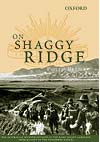
On
Shaggy Ridge (2004)

Shaggy Ridge
View South Then

Shaggy Ridge
View South Today

Shaggy Ridge
View South Today

Green Snipers Pimple Then

Green Snipers Pimple Today

The Pimple Then

The
Pimple Today
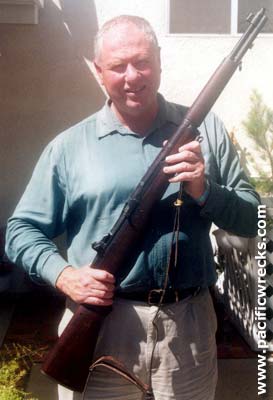
Author Phil Bradley with
Tommy Robert's M1
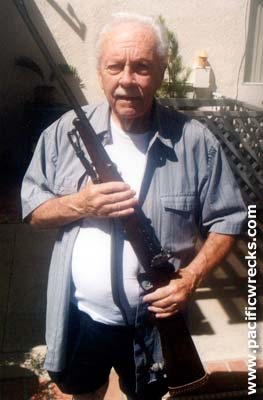
Ted Roberts with his brother's hunting rifle. Ted was US Navy veteran who served aboard USS Quincy CA-39

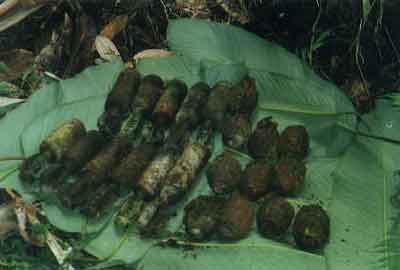
Munitions discovered on
Shaggy Ridge battlefield

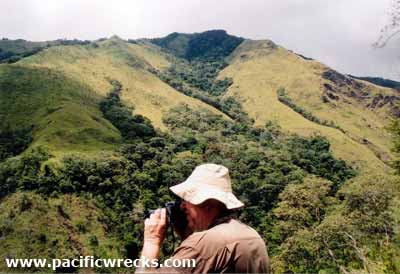
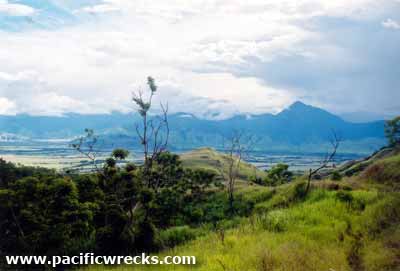
Phil Bradley
at
Shaggy Ridge in 2003
Other Shaggy
Ridge Reviews:
Wartime Issue 28
Canberra Times |